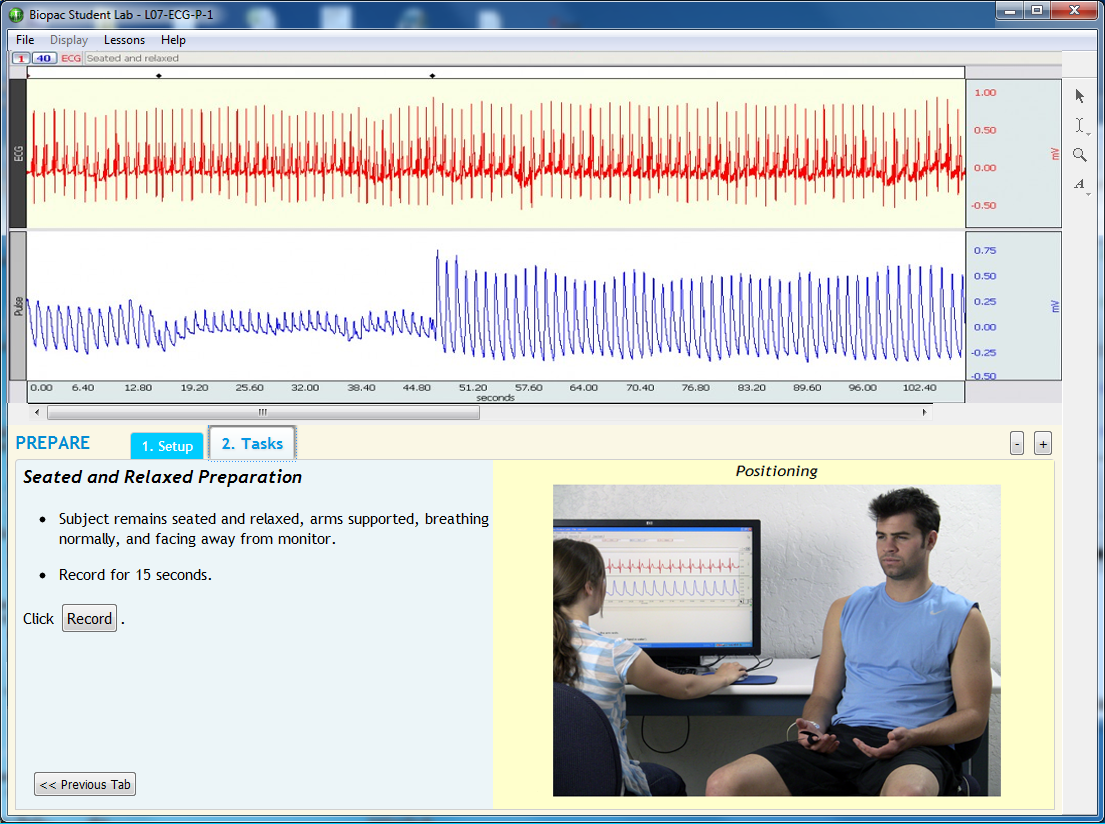L07 ECG & Pulse

This BSL lesson examines the mechanical action of the heart and peripheral pulse pressure. The lesson demonstrates how the heart pumps the blood throughout the body using a pulse plethysmogram transducer and Lead II ECG. The students will record their data while performing a number of different tasks. They will analyze the data and determine the speed of their own pressure pulse wave under different conditions.
Experimental Objectives
- To become familiar with the principle of plethysmography and its usefulness in qualitatively assessing peripheral changes in blood volume.
- To observe and record changes in peripheral blood volume and pressure pulse under a variety of both experimental and physiological conditions.
- To determine the approximate speed of the pressure pulse wave traveling between the heart and the finger.
- To illustrate the electrical activity associated with normal cardiac activity and how it relates to the flow of blood throughout the body.
Tasks Performed by the Student
BSL Lessons are designed to allow at least four students to record and save data in a normal lab period (60-90 minutes). Typically, labs work most efficiently with three or more students working together at each BSL station.
- Record pulse and ECG Lead II.
- Sit with forearm supported.
- Stick non-recording arm in a bucket of cold water.
- Raise non-recording arm above head.
Videos
BSL L07 Calibration
Biopac Student Lab Student Download
Lesson Hardware
This lesson requires a Biopac Student Lab (BSL) System and the following hardware. If your BSL System does not include all hardware items, expand your system by selecting required items below. For more details, review the Lesson: L# BSL Lessons - see the Lab Manual or launch BSL; A# and H# BSL PRO Lessons, click the PDF link above to review full setup, recording, and analysis procedures.
WHAT'S NEW
Biology research covers a wide variety of studies all aiming to understand living organisms...
Stay Connected